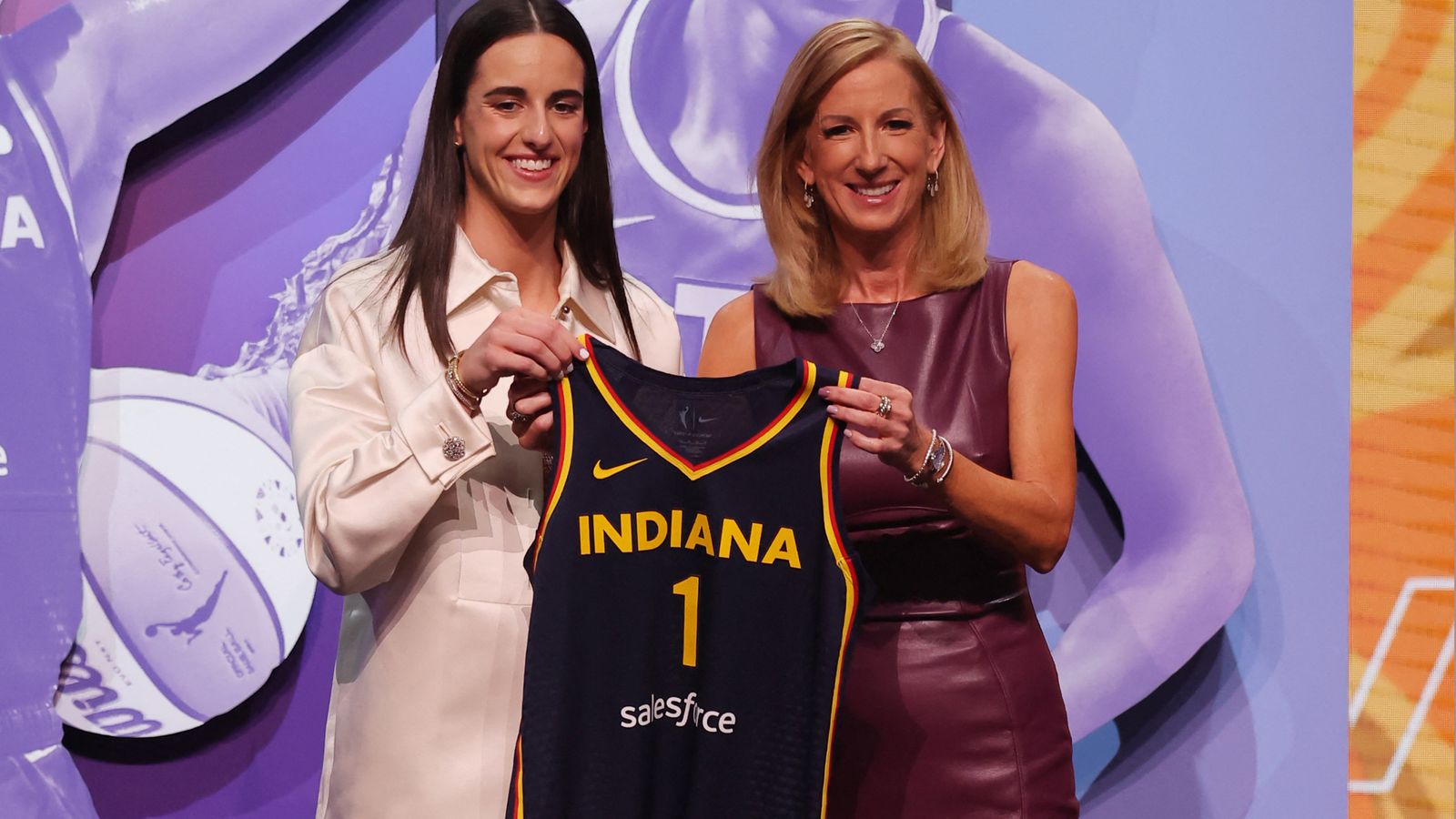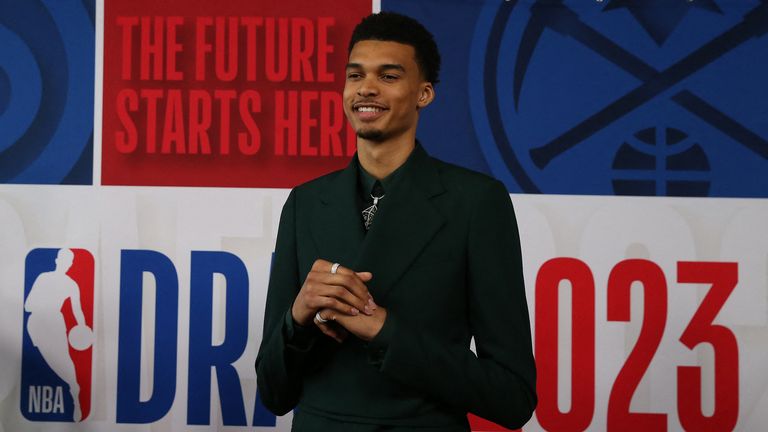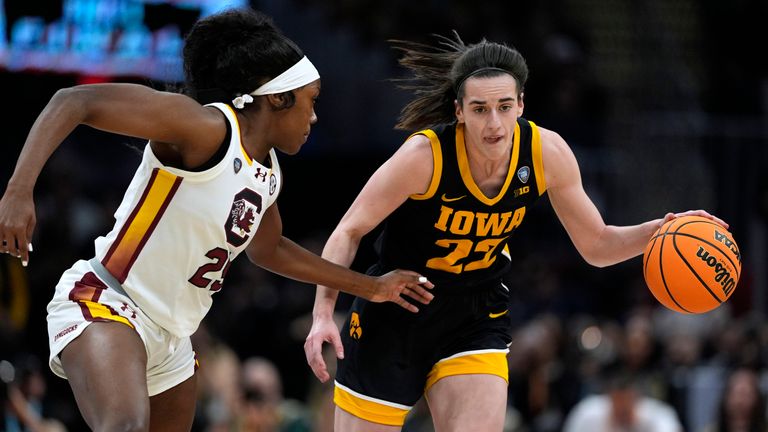

One of the most anticipated Women’s National Basketball Association’s (WNBA) Drafts saw the Indiana Fever snap up college basketball superstar Caitlin Clark as their top pick, however the disparity in her salary compared to National Basketball Association (NBA) players has sparked criticism.
The University of Iowa legend has already made history as the National Collegiate Athletics Association’s (NCAA) overall top scorer, and her very presence on the court has contributed to increased viewer ratings and attendance for NCAA games, and greater merchandise sales.
Clark will earn $338,056 (£271,141) over four years, according to the WNBA’s Collective Bargaining Agreement (CBA).
Under the 2024 WNBA rookie scale for the No.1-4 draft picks, she will earn a base salary of $76,535 (£61,384) for her first year rising annually with a fourth-year option of $97,582 (£78,253).
Read more: Who is Caitlin Clark?
Of the WNBA draft picks No. 2-4, Stanford’s Cameron Brink, who went to the Los Angeles Sparks, South Carolina’s Kamilla Cardoso, now with the Chicago Sky, and Tennessee’s Rickea Jackson, also with the Sparks – will earn the same as Clark.
Male athletes in the NBA rake in much more, with San Antonio Spurs rookie star Victor Wembanyama – the No. 1 pick in last year’s NBA Draft – securing a $55m (£44m) four-year contract under which he pocketed $12.1m (£9.7m) in his first season, according to the athlete contract tracker Spotrac.
Clark’s salary is only 0.6% of Wembanyama’s earnings.
She is expected to secure lucrative endorsement deals off the court, but her relatively low wage incited debate on social media.
After the draft, Joe Biden posted on X commenting on the overall state of salaries in women’s sports saying they were “not paid their fair share”.
The US president said: “Women in sports continue to push new boundaries and inspire us all. It’s time that we give our daughters the same opportunities as our sons and ensure women are paid what they deserve.”
Meanwhile, NFL quarterback for the Pittsburgh Steelers, Russell Wilson, said: “These ladies deserve so much more.”
The NBA generates much larger revenue ($10bn yearly) compared to the WNBA, which is projected to bring in an estimated $200m, according to Just Women’s Sports.
Read more:
LeBron James’s son declares for NBA Draft
NBA champion ‘awake and feeling great’ after heart transplant
Spotrac chief Michael Ginnitti explained the “biggest stumbling block” with the growth of WNBA player compensation was the “way revenue is being shared”.
Mr Ginitti wrote: “Per the 2020 CBA, the league must hit a certain budgeted revenue threshold annually before any revenue sharing kicks in. While overall revenue is increasing, player’s ability to capitalise is still very limited. Change is imminent.”
Las Vegas Aces player Kelsey Plum previously highlighted this, having said: “We’re not asking to get paid what the men get paid. We’re asking to get paid the same percentage of revenue shared.”
Speaking to The Residency Podcast, Plum added: “I don’t think I should get paid the same as Lebron… in the NBA, they have percentages of revenue shared for the players – so, jersey sales, obviously their TV contracts.
“Their contracts get bigger and bigger… but that’s because their CBA negotiates, where the owners are making certain types of money, [the players] get that as well. In the WNBA, that’s not the case.”
Some social media users urged others to come to WNBA games to increase their popularity.
Podcaster Aubrey Strobel posted on X saying: “Vote with your $ – watch women’s basketball games on TV, go to games, buy more merch. This raises everyone’s salary.”
The WNBA season starts on 14 May and Clark is likely to make her season debut against the Connecticut Sun.








